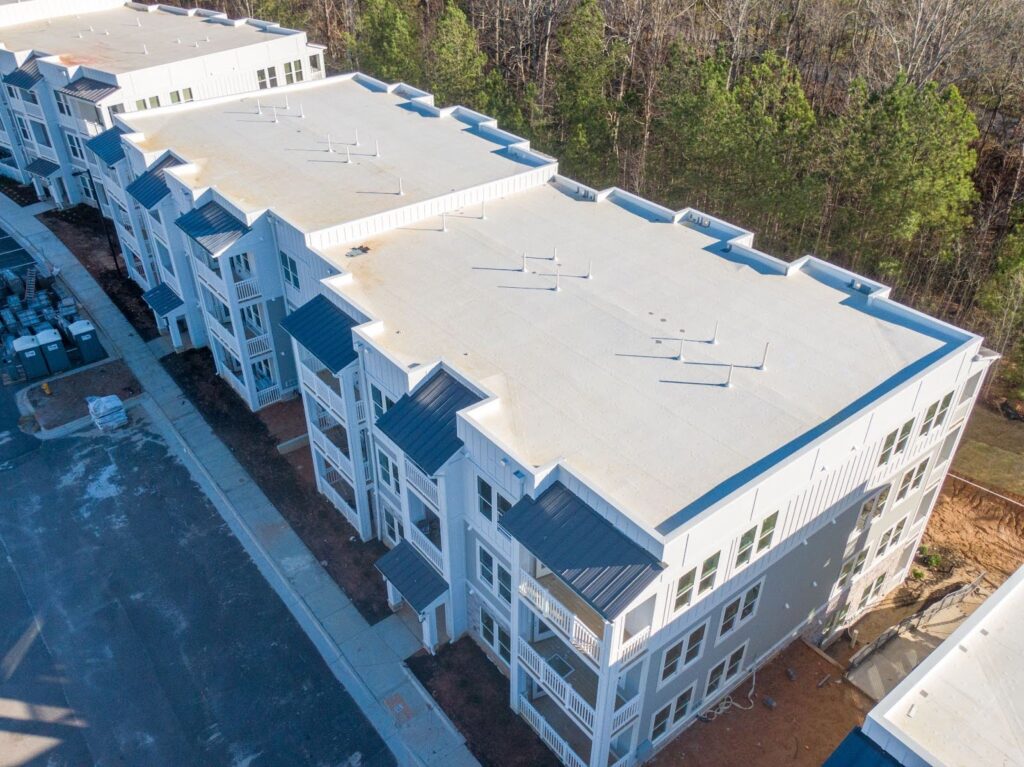Commercial roofing systems are built to be robust, but even the most durable materials can fail when exposed to persistent wear, neglect, or improper installation. Understanding the root causes of damage can help extend the life of a roof, save money, and protect a business’s infrastructure. Here, we examine the most common culprits behind commercial roofing damage and how to proactively mitigate them.
Severe Weather and Environmental Stressors
Extreme weather conditions are among the most significant threats to commercial roofing in Denver. The city’s fluctuating climate, characterized by intense UV rays, snowstorms, hail, and high winds, accelerates material deterioration. Ultraviolet radiation from the sun dries out roofing membranes, causing cracking and blistering over time. Hail impact can puncture roofing systems, particularly on aging or poorly maintained surfaces.
Wind uplift, another critical factor, can compromise roof edges and seams, leading to water intrusion. Ice dams in winter can exacerbate this issue by trapping water under shingles or membrane layers. Effective mitigation includes routine inspections, reinforced edge flashing, and roof materials with high UV and impact resistance ratings.
Poor Installation and Workmanship Deficiencies
A commercial roof’s performance hinges on how well it is installed. Improper installation often leads to premature failure, regardless of the quality of materials used. Misaligned seams, insufficient insulation placement, poor flashing application, or inadequate fastener spacing create vulnerabilities that become apparent after just one storm or freeze-thaw cycle.
Denver roofing companies must be vetted carefully, with preference given to those that specialize in commercial systems and offer solid workmanship warranties. When seeking roofers in Denver, choose contractors with verifiable commercial portfolios and manufacturer certifications to avoid costly repairs or early replacement.
Inferior or Improper Flashing Components
Flashing is a critical barrier against water intrusion at joints, penetrations, and terminations. Using low-grade flashing materials—such as thin, non-galvanized metals or degraded rubber—is a shortcut that inexperienced or budget contractors may take. These materials are highly susceptible to rust, UV degradation, and splitting under temperature fluctuations.
Denver’s seasonal extremes require flashing that is both flexible and corrosion-resistant, such as stainless steel or copper for metal flashing, or premium-grade neoprene boots for vent pipes. Replacing substandard flashing and performing targeted repairs should be a top priority during any commercial roof inspection.
Foot Traffic and Mechanical Damage
Commercial roofs often accommodate HVAC units, satellite equipment, and other mechanical systems that require regular maintenance. As a result, technicians frequently traverse the roof, causing wear and tear in high-traffic zones. This type of mechanical damage can lead to punctures, membrane displacement, and insulation compression.
Preventive measures include installing designated walk pads, clearly marked maintenance paths, and mandatory footwear guidelines for service providers. Additionally, high-durability membranes like modified bitumen or thermoplastic polyolefin (TPO) are recommended for buildings expecting frequent rooftop activity.
Standing Water and Drainage Failures
Ponding water, a common issue on flat or low-slope commercial roofs, contributes to accelerated aging of roofing materials and increases the risk of leaks. Water that remains stagnant for more than 48 hours can lead to structural sagging, algae growth, and membrane blistering. In colder months, trapped water can freeze, further damaging the roofing substrate.
Proper drainage design, including clean and unobstructed gutters, interior drains, and tapered insulation systems, is essential for roofing in Denver. Annual drain cleaning, especially before snow season, should be part of a property’s maintenance protocol to prevent this costly issue.
Neglected Maintenance and Lack of Inspections
One of the most preventable causes of commercial roof failure is simply neglect. When routine inspections are skipped or delayed, minor issues evolve into major damage. For example, a small puncture left unchecked may expand under wind stress or allow water intrusion, damaging insulation and creating mold risks inside the building.
Establishing a structured maintenance plan that includes seasonal inspections, post-storm assessments, and minor repairs can extend a commercial roof’s lifespan by up to 50%. Facilities managers should keep detailed inspection logs and work with local professionals who understand the specific requirements of Denver roofing systems.
Age and Expired Roofing Systems
Even with the best materials and meticulous care, all commercial roofs have a finite life expectancy. Typical flat roofing systems like EPDM, TPO, or modified bitumen last between 20 to 30 years, depending on weather conditions and upkeep. Past this point, seams may loosen, fasteners may back out, and membranes may deteriorate beyond repair.
Property owners should begin planning for replacement before the system reaches its maximum life, rather than reacting to persistent leaks or structural sagging. Denver roofing contractors can perform infrared moisture scans and core cuts to determine the extent of hidden damage and recommend cost-effective replacement options.
The Importance of Hiring Specialized Roofing Contractors
Addressing or preventing commercial roof damage requires expertise. Not all roofers in Denver are trained to handle the complexities of commercial systems. When choosing a contractor, commercial property managers must assess the roofer’s experience, licensing, portfolio, and ability to comply with local building codes.
Working with a trusted roofing company in Denver, such as Tried and True Roofing, ensures access to seasoned professionals who understand the region’s challenges and can implement high-performance solutions tailored to commercial needs.
Conclusion
Commercial roofing damage is often the result of a combination of factors, including environmental stress, installation errors, poor material choices, and maintenance neglect. In Denver, where the climate tests roofing systems year-round, proactive planning and expert workmanship are critical to long-term success. By addressing vulnerabilities early and investing in durable materials and experienced contractors, property managers can protect their assets, minimize costly disruptions, and maintain the structural integrity of their buildings for decades.


